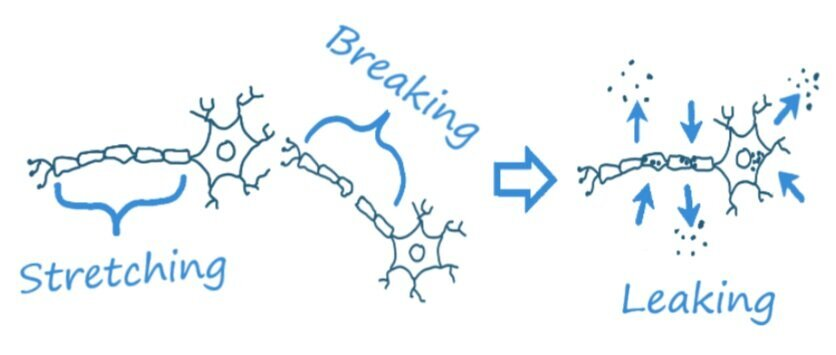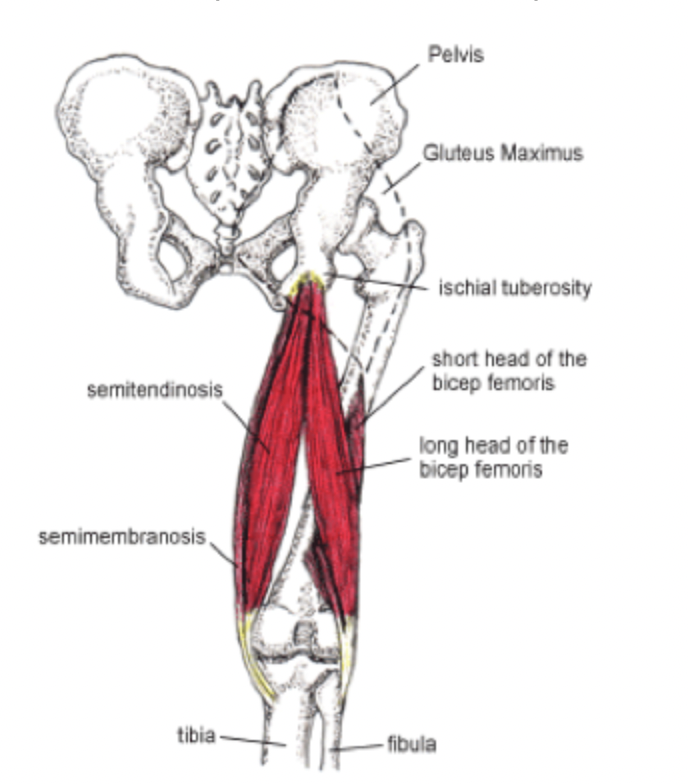Concussion Biology and Prevention
- golabiromtin
- Mar 14
- 3 min read
Updated: Jun 23
By Romtin G.
The first thing to come to mind when you're asked about a head injury is most likely a concussion. We've heard the word thrown around in many different contexts, but what really defines a concussion? Essentially, a concussion is a mild traumatic brain injury (TBI) caused by a blow to the head or body that shakes / whiplashes the brain within the skull. This sudden impact disrupts normal brain function, leading to temporary symptoms such as confusion, dizziness, and headaches. Let's dive into what exactly happens that disrupts your normal brain function, as well as treatments and prevention.

At the cellular level, a lot goes on when you get a concussion. Neurons are specialized cells that form the foundation of the entire nervous system, so they are the most common cells present in the brain. They consist of dendrites (branching extensions that receive information), the soma (cell body where maintenance functions are performed), and the axon (long extensions that carry electrical impulses to the dendrites of another neuron at a gap known as the synapse). When you get a concussion, a process known as axonal shearing occurs: the impact stretches and tears axons, which ultimately disrupts communication between all brain cells. With this altered communication, there's commonly an imbalance in the brain's neurotransmitters (messengers), and it's often the excitatory neurotransmitters (e.g., glutamate) that are released in excess. This causes a complete energy crisis in your brain, as it requires much more resources to regulate these chemicals, contributing to the altered cognition (thinking, memory, attention) that comes after a concussion. The crisis is again compounded because the mitochondria (located in the soma) are damaged, and we all know that the mitochondria are the powerhouses of the cell - they produce energy with an electrochemical gradient that fuels every single function in our body. As your brain tries to repair this damage with its immune cells (microglia), it triggers an inflammatory response, which leads to swelling and a pressure increase inside the skull (cerebral edema). If this inflammatory response persists after the concussion, memory issues, mood disturbances, and headaches will become chronic neurological symptoms, among many other uncomfortable effects.

When the brain experiences trauma, several other physiological processes are triggered, such as a lack of blood flow to the brain, again depleting the energy levels in neurons. The mechanical forces that cause damage to the endothelial cell lining of important tissues (like the blood-brain barrier) make them permeable temporarily following a concussion, allowing toxins and inflammatory marks to enter the brain. In repeated concussions, there can be an accumulation of tau proteins (misfolded proteins that cause Alzheimer's Disease) and other toxic proteins in the brain, leading to long-term neurodegenerative conditions such as dementia and chronic traumatic encephalopathy.
If you get a concussion once, it probably isn't a big deal, but you should definitely follow the proper steps to encourage the best healing possible and to avoid another concussion happening again. After visiting your doctor, physical and cognitive rest is essential, particularly in the first two days. This means avoiding physical exertion, mental tasks (like reading, screen time), and even social interactions that could strain the brain. Once symptoms begin to improve, a step-by-step approach is used to return to physical activity, with monitored increases in intensity (e.g., light aerobic activity, sport-specific exercises) before returning to sports head-on (pun intended). Pain relievers like acetaminophen may help with headaches, and antidepressants / anti-anxiety medications may be prescribed if emotional or mental health symptoms occur. If you are experiencing memory loss that doesn't resolve with time, cognitive-behavioral therapy is used to help manage these symptoms as well as anxiety and irritability. Neurostimulation and electrical therapies like transcranial magnetic stimulation and electromagnetic therapy are emerging treatments that use electrical currents to promote neuroplasticity (the brain's ability to adapt and form new neural connections) and accelerate recovery.
Preventing concussions is relatively simple. Make sure you wear protective gear (e.g., helmets) when you're engaging in sports or activities that have a high concussion risk. Although they can't protect against the rotational forces that cause concussions, they reduce the severity of the impact and remain, nonetheless, essential. Make sure to follow safety rules, learn and practice proper techniques, and incorporate neck strengthening exercises into your routine to help absorb some of the force from an impact. NEVER hide a head injury! If you feel like something is off, trust your instincts and immediately stop the sport or activity until you are sure that nothing is wrong or until you've received medical aid.
Sources
https://qbi.uq.edu.au/blog/2018/05/what-does-concussion-do-brain#:~:text=Within%20the%20skull%2C%20the%20brain,at%20the%20site%20of%20impact.
https://www.mayoclinic.org/diseases-conditions/concussion/diagnosis-treatment/drc-20355600
https://www.mayoclinic.org/tests-procedures/transcranial-magnetic-stimulation/about/pac-20384625#:~:text=Transcranial%20magnetic%20stimulation%20(TMS)%20is,surgery%20or%20cutting%20the%20skin.


